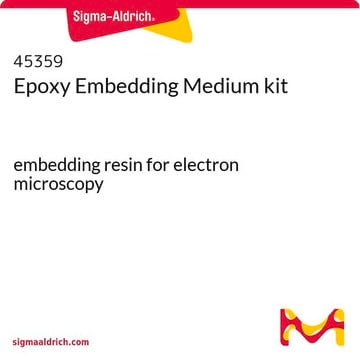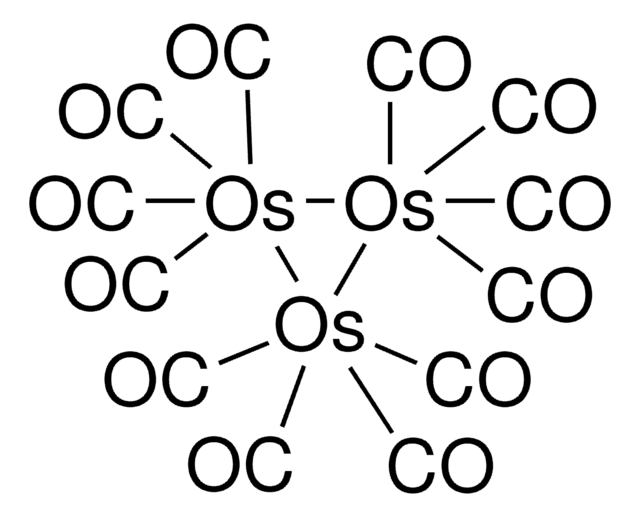O5500
Osmium tetroxide
Sealed ampule.
Sinónimos:
Osmium(VIII)-oxide, ‘Osmic acid’
About This Item
Productos recomendados
grado
for analytical purposes
densidad de vapor
8.8 (vs air)
presión de vapor
7 mmHg ( 20 °C)
Formulario
powder
idoneidad de la reacción
reagent type: oxidant
bp
130 °C (lit.)
mp
39.5-41 °C (lit.)
cadena SMILES
O=[Os](=O)(=O)=O
InChI
1S/4O.Os
Clave InChI
VUVGYHUDAICLFK-UHFFFAOYSA-N
¿Está buscando productos similares? Visita Guía de comparación de productos
Categorías relacionadas
Descripción general
Aplicación
Acciones bioquímicas o fisiológicas
Otras notas
Producto relacionado
Palabra de señalización
Danger
Frases de peligro
Consejos de prudencia
Clasificaciones de peligro
Acute Tox. 1 Dermal - Acute Tox. 2 Inhalation - Acute Tox. 2 Oral - Eye Dam. 1 - Skin Corr. 1B
Código de clase de almacenamiento
6.1A - Combustible acute toxic Cat. 1 and 2 / very toxic hazardous materials
Clase de riesgo para el agua (WGK)
WGK 1
Punto de inflamabilidad (°F)
Not applicable
Punto de inflamabilidad (°C)
Not applicable
Equipo de protección personal
Eyeshields, Faceshields, Gloves, type P3 (EN 143) respirator cartridges
Elija entre una de las versiones más recientes:
¿Ya tiene este producto?
Encuentre la documentación para los productos que ha comprado recientemente en la Biblioteca de documentos.
Los clientes también vieron
Nuestro equipo de científicos tiene experiencia en todas las áreas de investigación: Ciencias de la vida, Ciencia de los materiales, Síntesis química, Cromatografía, Analítica y muchas otras.
Póngase en contacto con el Servicio técnico








